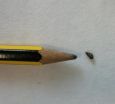(Press-News.org) LONDON, ON – The impact of bipolar disorder during pregnancy has been hotly contended among the research community. Now, a new study from Lawson Health Research Institute and Western University is sorting out the debate and calling for more targeted, prospective research.
Bipolar disorder is characterized by depression, hypomania, or mania. It is most common among women, and its episodes are often concentrated during the height of the reproductive years.
Bipolar disorder can lead to suicide, infanticide, and increased risk for psychiatric hospitalization during the postpartum period. During pregnancy, though, the impact is unclear. Through a comprehensive literature review, Dr. Verinder Sharma and his team sought to clearly define what scientists already knew about bipolar disorder during pregnancy, and where they should look next.
Despite contradictory findings, their review suggests pregnancy could have a positive impact on bipolar disorder. Throughout the literature, bipolar II disorder was either uncommon or in remission during pregnancy. Women already diagnosed with bipolar disorder had fewer and shorter episodes while pregnant. Pregnant women also had a lower risk of any other mood disorder than non-pregnant women.
However, the impact of mood stabilizer medications has complicated much of the existing data. In the literature, bipolar disorder is often misdiagnosed as depression, and antidepressants are prescribed as treatment. These medications are known to make bipolar symptoms worse. Similarly, many women taking mood stabilizers discontinue their prescriptions to avoid potential side effects on their unborn babies. This rapid break appears to provoke bipolar episodes.
These circumstances have made it challenging for scientists to separate the impact of the drugs from the impact of the disorder. To make a clear judgment, Dr. Sharma is calling for large, multicenter, prospective studies that specifically address the natural course of the disorder.
"There is no period in a woman's life when the risk of relapse of bipolar disorder is as high as in the postpartum period. This is in sharp contrast to pregnancy, when women may experience an improvement in their symptoms," he says. "If we fail to understand the effect of pregnancy on bipolar disorder, we will fail to understand bipolar disorder."
###The study was funded by the Ontario Mental Health Foundation, and will be published online tomorrow in The Journal of Clinical Psychiatry.
Dr. Verinder Sharma is a Scientist at Lawson Health Research Institute and Western University. He is a Professor in the Departments of Psychiatry and Obstetrics & Gynecology, also at Western, and a Psychiatrist at St. Joseph's Health Care London's Perinatal Clinic.
Lawson Health Research Institute. As the research institute of London Health Sciences Centre and St. Joseph's Health Care London, and working in partnership with Western University, Lawson Health Research Institute is committed to furthering scientific knowledge to advance health care around the world. www.lawsonresearch.com
For more information, please contact:
Sonya Gilpin
Communications & Public Relations
Lawson Health Research Institute
519-685-8500 ext. 75852
519-854-7164
sonya.gilpin@lawsonresearch.com
www.lawsonresearch.com
Lawson researcher sings the baby blues
Study provides new direction for research in bipolar disorder during pregnancy
2012-08-22
ELSE PRESS RELEASES FROM THIS DATE:
MMV develops framework to assess risk of resistance for antimalarial compounds
2012-08-22
Medicines for Malaria Venture has developed a framework to evaluate the risk of resistance for the antimalarial compounds in its portfolio. A paper based on this work: A framework for assessing the risk of resistance for antimalarials in development has been published in the Malaria Journal today.
Resistance defines the longevity of every anti-infective drug, so it is important when developing new medicines for malaria, to check how easily promising antimalarial compounds will select for resistance. Once this is known, it facilitates the prioritization of not only the ...
More sophisticated wiring, not just bigger brain, helped humans evolve beyond chimps
2012-08-22
Human and chimp brains look anatomically similar because both evolved from the same ancestor millions of years ago. But where does the chimp brain end and the human brain begin?
A new UCLA study pinpoints uniquely human patterns of gene activity in the brain that could shed light on how we evolved differently than our closest relative. Published Aug. 22 in the advance online edition of Neuron, these genes' identification could improve understanding of human brain diseases like autism and schizophrenia, as well as learning disorders and addictions.
"Scientists usually ...
Lack of food increases hospital use by HIV-infected urban poor in SF
2012-08-22
UCSF researchers found that poor HIV-infected individuals living in San Francisco are significantly more likely to visit emergency rooms and to have hospital stays if they lack access to food of sufficient quality and quantity for a healthy life.
"In the prior three months, a quarter of participants in the study reported an ER visit, and just over a tenth reported a hospitalization, which shows that we are dealing with a population with high levels of illness. But the food insecure people were even sicker than the food secure, which is consistent with their experiencing ...
Green tea compound shows promise for tackling cancer
2012-08-22
A compound found in green tea could be a weapon in treatments for tackling cancer, according to newly-published research at the University of Strathclyde in Glasgow, Scotland.
The extract, known as epigallocatechin gallate, has been known to have preventative anti-cancer properties but fails to reach tumours when delivered by conventional intravenous administration.
However, in initial laboratory tests at the Universities of Strathclyde and Glasgow, researchers used an approach which allowed the treatment to be delivered specifically to the tumours after intravenous ...
Glass offers improved means of storing UK's nuclear waste
2012-08-22
ILW makes up more than three quarters of the volume of material destined for geological disposal in the UK. (1)
Currently the UK's preferred method is to encapsulate ILW in specially formulated cement. The waste is mixed with cement and sealed in steel drums, in preparation for disposal deep underground.
Two studies, published in the latest issues of The Journal of Nuclear Materials and European Journal of Glass Science and Technology A show that turning this kind of waste into glass, a process called vitrification, could be a better method for its long-term storage, ...
Losing stream in our battle to predict and prevent invasive species
2012-08-22
Invasive species – plants, animals, and microbes introduced to regions beyond their native range – carry a global price tag of $1.4 trillion dollars. They are responsible for the loss of natural resources and biodiversity, damages to infrastructure, and an uptick in infectious diseases.
Not all non-native species pose a threat. Scientists around the world have spent the last several decades teasing apart the conditions that set the stage for debilitating invaders, like giant hogweed, zebra mussels, or gray squirrels. A number of hypotheses have emerged to help predict ...
Survival without water: A key trait of an aquatic invader to spread
2012-08-22
Nowadays, an increasing number of rivers and lakes are being invaded by exotic snails, which come from remote regions, and even other continents. Such species represent a threat to native species, as they compete for food or space with them.
This is the case of the mudsnail Potamopyrgus antipodarum. This small aquatic snail is native to New Zealand, and has spread throughout rivers, lakes or streams in Europe, Australia, America and Asia. The invasion success of this mudsnail may be partly due to the ability of females to reproduce without participation of males (i.e. ...
Scientists quantify nanofiber health risk to workers
2012-08-22
Health risks posed to people who work with tiny fibres used in manufacturing industries could be reduced, thanks to new research.
Research into the health risks posed by nanofibres – used to strengthen objects from tennis rackets to airplane wings – has pinpointed the lengths at which these fibres are harmful to the lungs.
Nanofibres, which can be made from a range of materials including carbon, are about 1,000 times smaller than the width of a human hair and can reach the lung cavity when inhaled.
This may lead to a cancer known as mesothelioma, which is known to ...
Thinking about kids? Man, you gotta shed the kilos
2012-08-22
Australian scientists studying the impact obesity has on pregnancy, are urging men to get 'match fit' before conceiving to assist with fetal development.
Reproductive experts from the University of Melbourne's Department of Zoology have discovered that a father's obesity negatively impacts sperm, resulting in smaller fetuses, poor pregnancy success and reduced placental development.
While the health risks surrounding obesity and pregnancy have largely been centred on overweight mothers, scientists from the University of Melbourne are putting the onus on men to shape ...
How to act if there is a fire on the AVE
2012-08-22
Researchers at the University of Cantabria have used computer models to analyse the best way to evacuate the Spanish High Speed Train, AVE, in the case of fire. The involvement of the crew in organising the fast transfer of passengers, completing the process before the train comes to a halt and collective collaboration to assist those with reduced mobility are just some of the strategies to be followed.
"In the event of fire on an AVE, two stages should be defined: the first is pre-evacuation in which passengers are transferred from one coach to another while the train ...
LAST 30 PRESS RELEASES:
Jeonbuk National University study shows positive parenting can protect adolescents against self-harm
Surface-engineered ZnO nanocrystals to tackle perfluoroalkyl substance contamination
This new understanding of T cell receptors may improve cancer immunotherapies
A new fossil face sheds light on early migrations of ancient human ancestor
A new immunotherapy approach could work for many types of cancer
A new way to diagnose deadly lung infections and save lives
40 percent of MRI signals do not correspond to actual brain activity
How brain-inspired algorithms could drive down AI energy costs
Gum disease may be linked to plaque buildup in arteries, higher risk of major CVD events
Contrails are a major driver of aviation’s climate impact
Structure of dopamine-releasing neurons relates to the type of circuits they form for smell-processing
Reducing social isolation protects the brain in later life
Keeping the heart healthy increases longevity even after cancer
Young adults commonly mix cannabis with nicotine and tobacco
Comprehensive review illuminates tau protein's dual nature in brain health, disease, and emerging psychiatric connections
Book prepares K-12 leaders for the next public health crisis
Storms in the Southern Ocean mitigates global warming
Seals on the move: Research reveals key data for offshore development and international ecology
Sports injuries sustained during your period might be more severe
World's first successful 2 Tbit/s free-space optical communication using small optical terminals mountable on satellites and HAPS
Can intimate relationships affect your heart? New study says ‘yes’
Scalable and healable gradient textiles for multi‑scenario radiative cooling via bicomponent blow spinning
Research shows informed traders never let a good climate crisis go to waste
Intelligent XGBoost framework enhances asphalt pavement skid resistance assessment
Dual-function biomaterials for postoperative osteosarcoma: Tumor suppression and bone regeneration
New framework reveals where transport emissions concentrate in Singapore
NTP-enhanced lattice oxygen activation in Ce-Co catalysts for low-temperature soot combustion
Synergistic interface engineering in Cu-Zn-Ce catalysts for efficient CO2 hydrogenation to methanol
COVID-19 leaves a lasting mark on the human brain
Scientists use ultrasound to soften and treat cancer tumors without damaging healthy tissue
[Press-News.org] Lawson researcher sings the baby bluesStudy provides new direction for research in bipolar disorder during pregnancy




